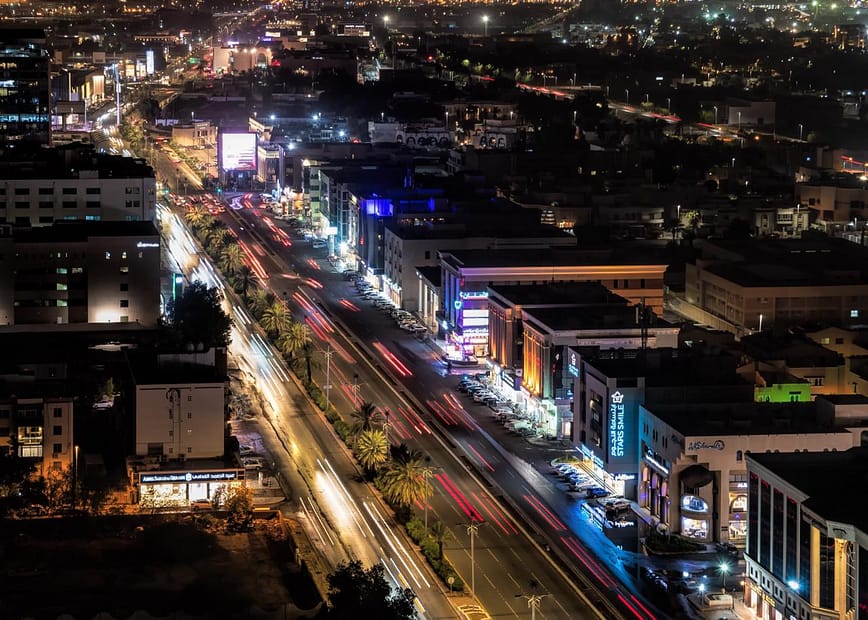In recent years, Saudi cities like Jeddah, Dammam, and Khobar have been undergoing significant transformations in their urban landscapes. With a strong focus on infrastructure development, enhancing public spaces, and promoting sustainable urban design. These cities are striving to create more livable and vibrant environments for their residents. Let’s delve into the key initiatives and developments shaping the urban fabric of these Saudi cities.
Infrastructure Development: Building the Backbone of Modern Saudi Cities
One of the cornerstones of urban planning in Saudi cities is infrastructure development. These cities have embarked on ambitious projects to improve transportation networks, upgrade utilities, and build smart city infrastructure.
Transportation: To address traffic congestion and improve mobility, major cities like Riyadh, Jeddah, and Dammam have invested heavily in public transportation systems. Projects such as the Riyadh Metro, Jeddah Metro, and Dammam Metro aim to provide efficient and sustainable transit options for residents and reduce reliance on private vehicles.
Utilities: Ensuring reliable utilities is essential for supporting urban growth. Saudi cities have been upgrading water supply systems, sewage networks, and power distribution infrastructure to meet the needs of expanding populations and enhance quality of life.
Smart Cities: The concept of smart cities is gaining traction in Saudi Arabia, with initiatives like NEOM leading the way. These projects aim to leverage cutting-edge technologies such as IoT, AI, and renewable energy to create sustainable and interconnected urban environments that enhance efficiency, productivity, and overall well-being.
Fostering Vibrant Public Spaces: Where Communities Thrive
Enhancing public spaces is another key focus area of urban planning in Saudi cities. From parks and waterfront developments to mixed-use districts, efforts are underway to create vibrant and inclusive spaces where residents can gather, socialize, and enjoy recreational activities.
Parks and Green Spaces: Increasing the availability of parks and green spaces is a priority for urban planners. These areas not only provide opportunities for recreation and relaxation but also contribute to environmental sustainability and improve air quality.
Waterfront Development: Cities like Jeddah are revitalizing their waterfront areas to create dynamic and attractive public spaces. Waterfront promenades, parks, and cultural attractions are being developed to enhance the city’s livability and create destinations for residents and visitors alike.
Mixed-Use Developments: Urban planners are promoting mixed-use developments that integrate residential, commercial, and recreational spaces within the same neighborhood. These developments encourage walkability, reduce reliance on cars, and create vibrant communities with a diverse range of amenities.
Embracing Sustainable Urban Design: Building for the Future
Sustainability lies at the heart of urban planning in Saudi cities, with a focus on green building standards, renewable energy, and urban renewal initiatives.
Green Building Standards: The adoption of green building standards and regulations is becoming increasingly common in Saudi cities. These standards promote energy efficiency, water conservation, and environmentally friendly construction practices to minimize the environmental impact of buildings.
Renewable Energy: Saudi cities are embracing renewable energy sources such as solar power to reduce dependence on fossil fuels and mitigate climate change. Solar panels, green roofs, and other renewable energy technologies are being integrated into urban infrastructure to create more sustainable and resilient cities.
Urban Renewal: Urban renewal projects aim to revitalize existing urban areas through infrastructure upgrades and adaptive reuse of buildings. These projects not only enhance the physical environment but also promote social and economic development in urban communities.
Engaging Communities: The Key to Success
Community engagement plays a crucial role in the success of urban planning initiatives. By involving residents in the decision-making process and soliciting their feedback and ideas. Cities can ensure that development projects meet the needs and aspirations of the people they serve.
In conclusion, the urban planning initiatives underway in Saudi cities are laying the foundation for more sustainable and urban environments. By investing in infrastructure, enhancing public spaces, and embracing sustainable design principles. These cities are building for the future and creating places where people can thrive.
More on INJ Architects:

